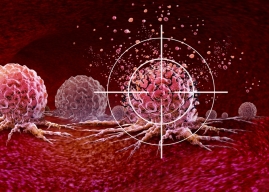Radiation Therapy for Breast Cancer: New Treatments and What Patients Should Know
Medically Reviewed by Jordan Gainey, MD
Radiation therapy remains a critical part of breast cancer treatment, but new techniques are making the process shorter, more effective, and easier for patients to tolerate. Dr. Jordan Gainey, a McLeod Radiation Oncologist, shares how these innovations are transforming care for women facing breast cancer.
How Radiation Therapy Works
“Radiation therapy preferentially causes damage to cells that are more rapidly dividing,” explains Dr. Gainey. “Breast cancer is more rapidly dividing than the surrounding normal organs. The normal organs can heal themselves while the breast cancer doesn’t have that option and is ultimately killed by the radiation.”
This approach allows physicians to target cancer while giving healthy tissue the ability to recover.
Shorter, More Tolerable Treatments
One of the biggest advances in recent years is reducing the number of treatments needed. “Ten or more years ago, the standard treatment would have been 25 to 30 daily treatments over five to six weeks,” says Dr. Gainey. “Now, most women are eligible for 15 treatments over just three weeks.”
At McLeod, Dr. Gainey has introduced even more streamlined options. “Since I got here, I’ve started doing the five treatment, whole breast radiation, which I think will become the standard very soon. I’ve also introduced accelerated partial breast irradiation — a five-treatment technique for certain low-risk cancers where we only treat a small volume around where the cancer started to reduce the chance the cancer will come back.”
These approaches are easier for patients to tolerate, often with fewer side effects. “Every time we’ve studied shorter treatments for breast cancer, they’ve been just as good and less toxic,” he notes.
The Importance of Screening
While treatment continues to improve, early detection remains the best defense. “There is a dedicated mammogram screening program at McLeod,” says Dr. Gainey. “Annual mammograms may not reduce your chances of needing radiation, but they greatly decrease the stage of the disease and increase the options you have for treatment.”
What’s Next in Radiation Therapy
Looking ahead, Dr. Gainey points to clinical trials that aim to personalize treatment even further. “We already have an open clinical trial examining whether a patient’s genetic risk factors can help us decide if they need radiation at all,” he explains. “Future clinical trials may determine who benefits most from five radiation treatments instead of five years of hormone therapy, or who may need less intense surgery — even eliminating the need to analyze lymph nodes in some cases.”
-
McLEOD REGIONAL MEDICAL CENTER FLORENCE
843-777-2000 -
McLEOD DARLINGTON
843-777-1100 -
McLEOD DILLON
843-774-4111 -
McLEOD LORIS
843-716-7000 -
McLEOD SEACOAST
843-390-8100 -
McLEOD CHERAW
843-537-7881 -
McLEOD CLARENDON
803-433-3000



-
McLEOD REGIONAL MEDICAL CENTER FLORENCE
843-777-2000 -
McLEOD DARLINGTON
843-777-1100 -
McLEOD DILLON
843-774-4111 -
McLEOD LORIS
843-716-7000 -
McLEOD SEACOAST
843-390-8100 -
McLEOD CHERAW
843-537-7881 -
McLEOD CLARENDON
803-433-3000
 Find a Doctor
Find a Doctor  Locations
Locations  Services
Services 